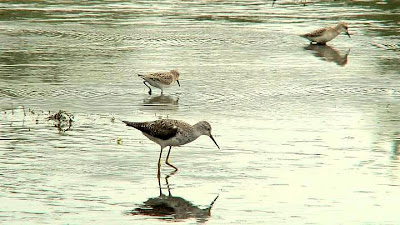 |
| A flock of mostly Least Sandpipers feed in the shallow water at Delta Lake |
 |
| Shorebirds come in a variety of sizes, which enables the different species to forage for food in various depths |
 |
| The Semipalmated Sandpiper is often quite common in mixed shorebird flocks |
 |
| A Merlin perches over the mudflats and waits for a good target bird to come into view |
 |
| Another Merlin watching the flats |
 |
| One of 4 Juvenile Bald Eagles that have been seen lately at Delta |
 |
| A Great Egret hunts for fish that have been stranded in the shallows |
 |
| Double-crested Cormorants show up to fish the Lake |
 |
| Lesser Yellowlegs |
No comments:
Post a Comment